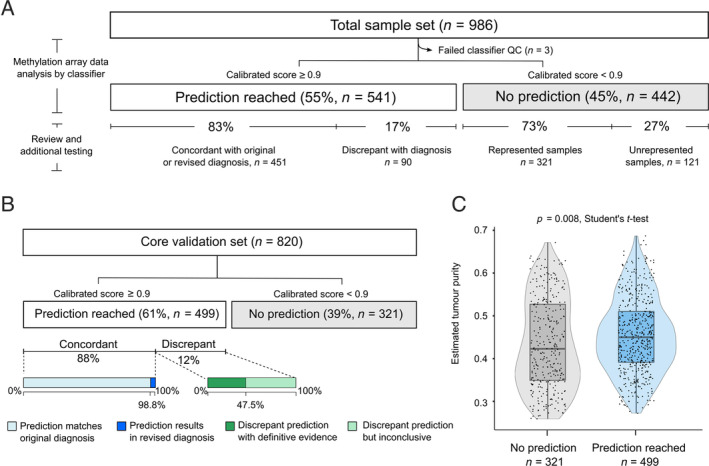Figure 1.

Overview of performance of the ‘DKFZ Classifier’ on the RNOH validation data set. (A) Overview of all cases in the study. (B) Overview of cases from the core validation cohort. (A and B) Prediction: classifier result with a calibrated score ≥0.9. The calibrated score is the probability for the given methylation class assignment. QC, quality control Concordant: samples predicted by the classifier to the methylation class corresponding with the original or revised diagnosis. Discrepant: where the predicted methylation class did not match the original histological diagnosis, and following review there was either sufficient evidence to reject the predicted result (discrepant with evidence) or the absence of sufficient evidence, such as targeted or RNA sequencing, to completely exclude the prediction (discrepant but inconclusive). ‘Represented samples’: diagnoses where the subtype was represented by a methylation class. ‘Unrepresented samples’: diagnoses not represented in the DKFZ Classifier. (C) The estimated tumour purity is higher in predicted (calibrated score ≥0.9) cases compared to cases not receiving a prediction (p = 0.008, Student's t‐test).
